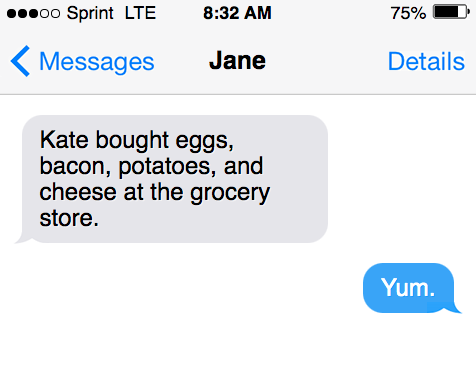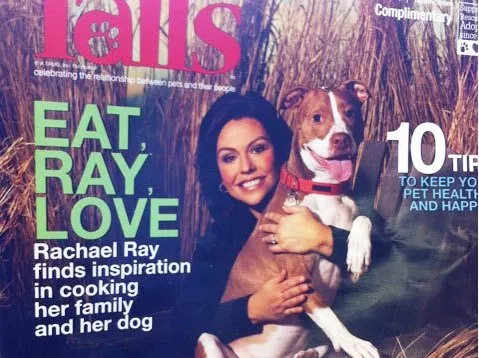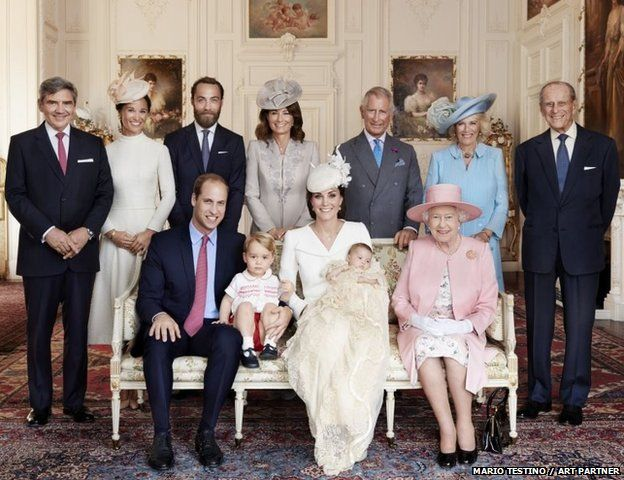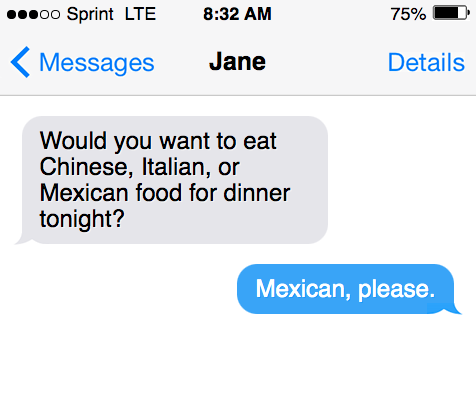Is the Oxford comma necessary in writing? What is the Oxford comma, and what do the style guides say when it comes to its use?
The heated debate on whether to use the Oxford comma or not is one of the more contentious amongst grammarians, and in the English language more broadly. Generally speaking, the matter is not one of grammar, but style and punctuation.
To learn all about the correct usage of the Oxford comma in English grammar and writing, keep reading!

What is an Oxford comma?
What’s the Oxford comma rule? When and where in a sentence should there be an Oxford comma, and in which cases is it best to avoid the use of the Oxford comma?
The Oxford comma, also known as the serial comma, last comma, or Harvard comma is the final comma contained in a sentence that lists three or more words.

See the following sentence as an example:
“I went to lunch with my dad, brother, and sister.“
Examples of sentences that use Oxford commas
- Please bring me a piece of bread, a plate, and a butter knife.
- Can you please pick up toilet paper, laundry detergent, and shampoo on your way home from work?
- Would you want to eat Chinese, Italian, or Mexican food for dinner tonight?
- I have to go to the mall, the dry cleaner’s, and the grocery store this afternoon.
- Sally ordered three smoothies: strawberry, peach, mango, and pineapple.
- Kate bought eggs, bacon, potatoes, and cheese at the grocery store.
- He was obnoxious, rude, and awkward, so I didn’t agree to go on a date with him.
- I went to lunch with my dad, brother, and sister.
See how the Oxford comma is invariably the last comma in that sentence, which lists three or more items.
In this way, the Oxford comma helps prevent ambiguity for the reader by showing the the final items are separate words.
The Oxford comma comes after the conjunction and, and is always the final comma in a sentence!
Funny examples of the missing Oxford comma

“Rachel Ray finds inspiration in cooking her family and her dog”
By the way, the image above was exposed for being photoshopped. But trust that similarly egregious editorial issues have occurred from a lack of commas.

Here’s another great example from the Royal Family (from BBC no less), of the missing Oxford comma resulting in a funny grammar misinterpretation:
“Catherine holding her daughter and the Queen.”
While it would definitely make for a funnier picture if the Queen were sitting on Catherine’s lap, as it turns out, BBC just forgot the final comma in the sentence. See again how the Oxford comma helps make writing digestible (and clear.)
“We went caroling with our dogs, Grandma and Grandpa.”
By eliminating the final comma in the sentence, there is additional weight added to the final items listed. Read it out loud to hear it better. It sounds like you went sledding with his dogs, which are named Grandma and Grandpa.
The real meaning of the sentence is that “We went sledding with our dogs, our Grandma, and Grandpa.” As in, three separate entities or elements of the subject sentence, “our dogs,” “Grandma,” and “Grandpa.”
Are Oxford commas grammatically correct?
To Oxford comma, or not to Oxford comma? That is the question.
Are Oxford commas necessary as a form of punctuation in grammar, or are they merely a matter of personal preference?
The answer: It really depends. But mostly, it’s just a matter of preference.

How do the style guides recommend to use the Oxford comma?
Hopefully it goes without being explicitly stated that the OUP instructs the use of the oxford comma.
The Chicago Manual of Style says that whether or not to use the oxford comma or serial comma is optional, “The serial comma is optional.” (The Chicago Manual of Style.)
On the Oxford comma debate, many writers still believe the Associated Press stylebook (AP,) is against the use of the Oxford comma. As it turns out, the AP tweeted a series of tweets in 2017 discussing their comma rules:
“We don’t ban Oxford commas! We say: If omitting a comma could lead to confusion or misinterpretation, then use the comma. —APStyleChat (1/4)
In other words, where it helps avoid potential ambiguity, use the Oxford comma.
Otherwise, where omitting the extra comma does not create ambiguity, leave it out, (if using the AP style guide).
Maybe AP changed their minds after the Oakhurst dairy incident (read below). Smart move, AP.
The American Psychological Association (APA, 2019), recommends using serial commas to make lists less ambiguous.

The Modern Language Association (MLA), which is commonly used and adopted in most high schools, universities and colleges, supports the use of the last comma or the Oxford comma in a series or list.
MLA suggests separating each item with a comma in a sentence that contain a list with two or more items.
Bonus fact!
Whip out this fun fact at a party, and watch them flock.
Normally, forgetting an Oxford comma isn’t a big deal. There was an incident, however, where a missing Oxford comma costed a dairy company $5 million in a lawsuit—how’s that for some motivation to learn the proper grammar!
Oakhurst Dairy from Portland, Me., were sued by four people because of an ambiguity in their employee contracts about overtime pay.
The confusion was because of, (hopefully you guessed it), the lack of an Oxford comma.
According to Maine law, employees that work past 40 hours are owed time-and-a-half for each subsequent hour. There was one caveat in their legislation, which is the following:
The canning, processing, preserving, freezing, drying, marketing, storing, packing for shipment or distribution of:
(1) Agricultural produce;
(2) Meat and fish products; and
(3) Perishable foods.
The serial comma belongs after the word shipment. Had the last comma been included in the sentence, they could have avoided a bill of $5-Mill.
Why is it called the Oxford comma?
The name for the Oxford comma makes complete sense: the Oxford comma gets its name from the Oxford University Press, also referred to by the acronym OUP.
According to the OUP style guide, the use of the Oxford comma has been standard for over a century.
In Review
The Oxford comma is a kind of punctuation mark that is used to separate the final two items in a series or list with three or more items mentioned.
The use of the serial comma, however, is a question of style, not grammar. That means it is not incorrect or correct to use the extra comma; though, as we have seen, it helps to differentiate the last two items in a sentence often for clarity purposes.
A final comment: While it’s not necessarily a question of using correct grammar, there are obvious instances (as we have seen above), where using the Oxford comma substantially improves the clarity of writing.
In such cases, (to follow suit the AP style guide), it absolutely makes sense to use the final comma.
The best rule of practice is to find out which house style is used for the piece of writing under question. For example, most universities identify the specific style guides used in each course.
Each guide has their own rules and suggestions when it comes to punctuation, grammar, syntax and the overall mechanics of writing.
To avoid ambiguity in writing, use the series comma where it enhances the clarity of writing by separating items listed in the same sentence.
However, if a writer or teacher claims that it is incorrect write sans serial comma; just direct them to this article!
Other comma rules
There are eight general comma rules to follow in English grammar (not counting the series comma!)
- Use a comma when conjoining two independent clauses with a coordinating conjunction, (such as, FANBOYS, learn all about this mnemonic here).
- Commas are used after introductory clauses or introductory phrases,
- Use a comma between items in a series,
- Use commas to frame an appositive or nearby noun phrases.
- Use commas to directly address various speakers in a sentence, (or writing in general).
- Direct quotations are sometimes framed by the use of commas, (though not always).
- Use commas to separate nonrestrictive clauses.Example: Biology, which is a field in scientific study, looks at the scientific study of life.
Use commas with dates, addresses, titles, and numbers
Example: Mahatma Gandhi was born in the Indian state of Gujarat, on October 2, 1869.
Want to learn more grammar rules?
This is the ‘write‘ place to find out! Read our grammar guides on the difference between ok vs okay.
Curious to know whether it’s fullproof, full proof or fullproof? What about beckon call or beck and call? Learn the difference and master the art of English prose.
Learning correct English grammar and writing is hard. That’s why we’ve written tons of articles helping blooming writers get better at communicating through words. Let’s get textual, and continue excelling in the use of the written word.
More punctuation marks (all 26 marks)
| Symbol | Name | Example |
| . | Period | I got this at the fair. |
| ? | Question mark | How many trucks does he have? |
| ! | Exclamation point | Wow! You’re a great rider. |
| , | Comma | I like the movie, but the color grading is odd to me. |
| : | Colon | Here are some fun ideas for the party: trivia questions, shuffle board, and more. |
| ; | Semicolon | I’ll visit you once I’m done with work; that’s a promise. |
| – | Hyphen | I have double-life situations. |
| – | En dash | How long is a China-Russia fight? |
| — | Em dash | The dog—and I’m afraid of four-legged animals—was so adorable. |
| ( ) | Parentheses | His favorite team (Chicago Bulls) has a chance to win the title. |
| [ ] | Square brackets | The AP writer said “[head] of baseball operations was disappointed.” |
| { } | Curly brackets | The colors {orange, green, lilac, blue} are for the garage. |
| < > | Angle brackets | |
| “ ” | Quotation marks | Bryan called it a “great situation.” |
| ‘ | Apostrophe | Some of Susan’s clothes are missing. |
| / | Slash or Virgule | I’m ordering food/dessert/more. |
| … | Ellipses | According to the school the “president… was disappointed.” |
| * | Asterisk | *Data from The Economist |
| & | Ampersand | Tiffany & Co. |
| • | Bullet point | • Simple • Great • Awesome |
| # | Pound symbol | #1 selling |
| ~ | Tilde | Bryan owns ~10 pairs of shoes. |
| \ | Backslash | |
| @ | At symbol | [email protected] |
| ^ | Caret symbol | 3^3 = 27 |
| | | Pipe symbol |
Glossary
Refresh the terms covered in this article
Sources
All sources used in this article are listed here:
- Chicago Manual of Style: Chicago Manual of Style
- “Oxford Comma Dispute Is Settled as Maine Drivers Get $5 Million,” New York Times, 2018.
- “Rachel Ray finds inspiration in cooking her family and her dog” Reddit.com
- “Catherine Holding her Daughter and the Queen” Thesauraus.com
- The Perils of Forgetting Your Holiday Oxford Comma
- American Psychological Association
- The Modern Language Association
Inside this article
Fact checked:
Content is rigorously reviewed by a team of qualified and experienced fact checkers. Fact checkers review articles for factual accuracy, relevance, and timeliness. Learn more.
Core lessons
Glossary
- Abstract Noun
- Accusative Case
- Anecdote
- Antonym
- Active Sentence
- Adverb
- Adjective
- Allegory
- Alliteration
- Adjective Clause
- Adjective Phrase
- Ampersand
- Anastrophe
- Adverbial Clause
- Appositive Phrase
- Clause
- Compound Adjective
- Complex Sentence
- Compound Words
- Compound Predicate
- Common Noun
- Comparative Adjective
- Comparative and Superlative
- Compound Noun
- Compound Subject
- Compound Sentence
- Copular Verb
- Collective Noun
- Colloquialism
- Conciseness
- Consonance
- Conditional
- Concrete Noun
- Conjunction
- Conjugation
- Conditional Sentence
- Comma Splice
- Correlative Conjunction
- Coordinating Conjunction
- Coordinate Adjective
- Cumulative Adjective
- Dative Case
- Determiner
- Declarative Sentence
- Declarative Statement
- Direct Object Pronoun
- Direct Object
- Diction
- Diphthong
- Dangling Modifier
- Demonstrative Pronoun
- Demonstrative Adjective
- Direct Characterization
- Definite Article
- Doublespeak
- False Dilemma Fallacy
- Future Perfect Progressive
- Future Simple
- Future Perfect Continuous
- Future Perfect
- First Conditional
- Irregular Adjective
- Irregular Verb
- Imperative Sentence
- Indefinite Article
- Intransitive Verb
- Introductory Phrase
- Indefinite Pronoun
- Indirect Characterization
- Interrogative Sentence
- Intensive Pronoun
- Inanimate Object
- Indefinite Tense
- Infinitive Phrase
- Interjection
- Intensifier
- Infinitive
- Indicative Mood
- Participle
- Parallelism
- Prepositional Phrase
- Past Simple Tense
- Past Continuous Tense
- Past Perfect Tense
- Past Progressive Tense
- Present Simple Tense
- Present Perfect Tense
- Personal Pronoun
- Personification
- Persuasive Writing
- Parallel Structure
- Phrasal Verb
- Predicate Adjective
- Predicate Nominative
- Phonetic Language
- Plural Noun
- Punctuation
- Punctuation Marks
- Preposition
- Preposition of Place
- Parts of Speech
- Possessive Adjective
- Possessive Determiner
- Possessive Case
- Possessive Noun
- Proper Adjective
- Proper Noun
- Present Participle
- Prefix
- Predicate



